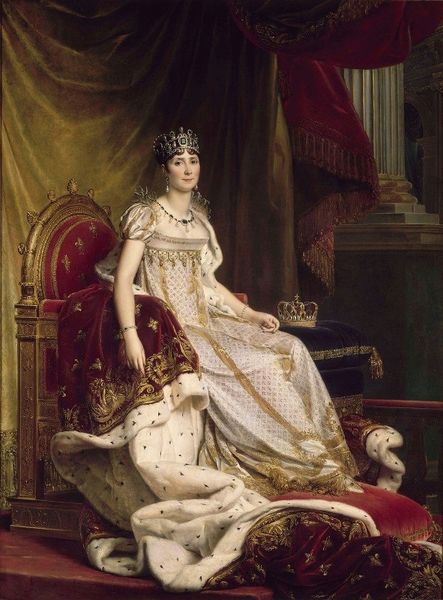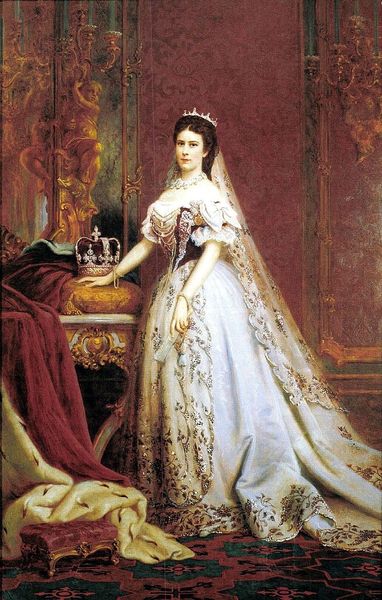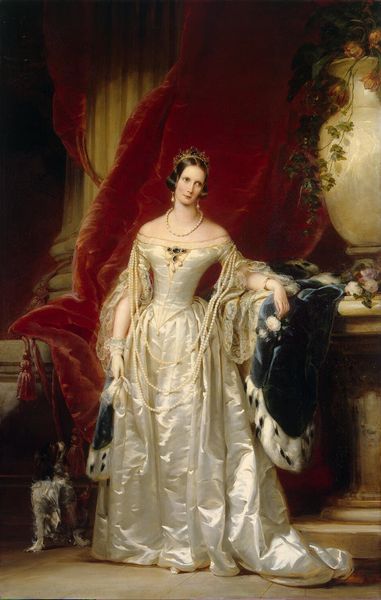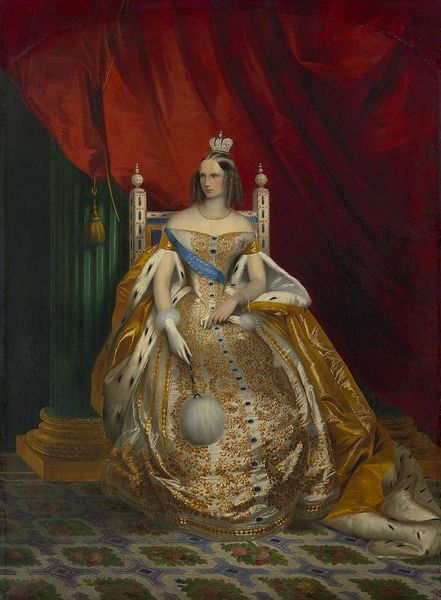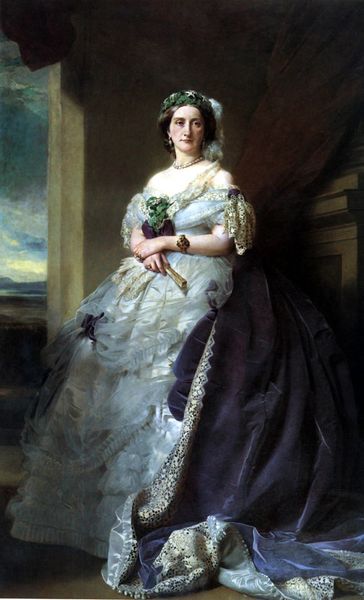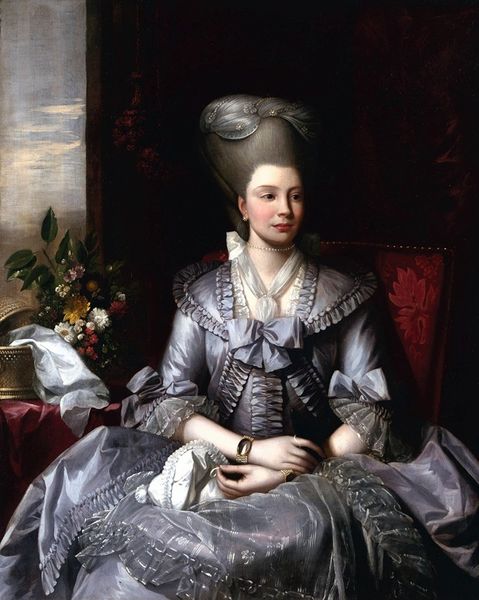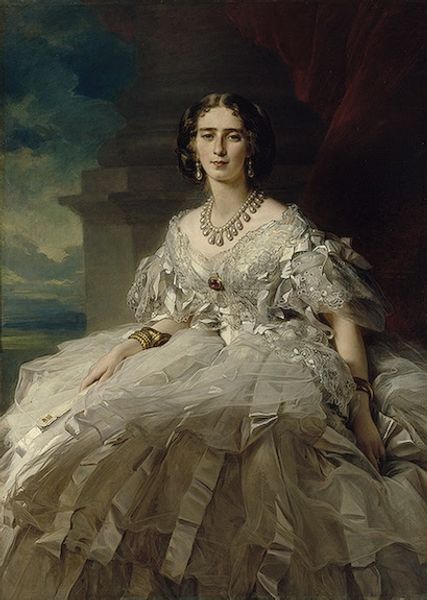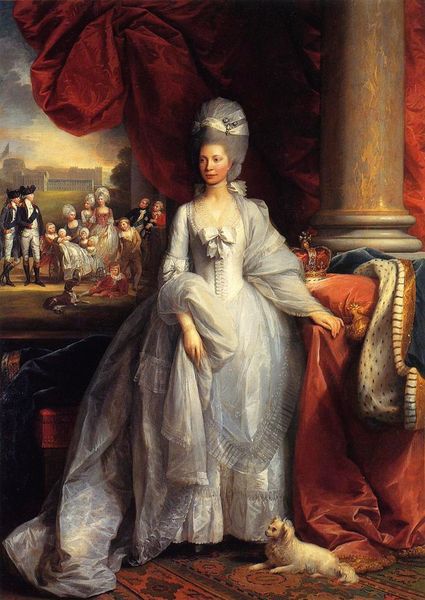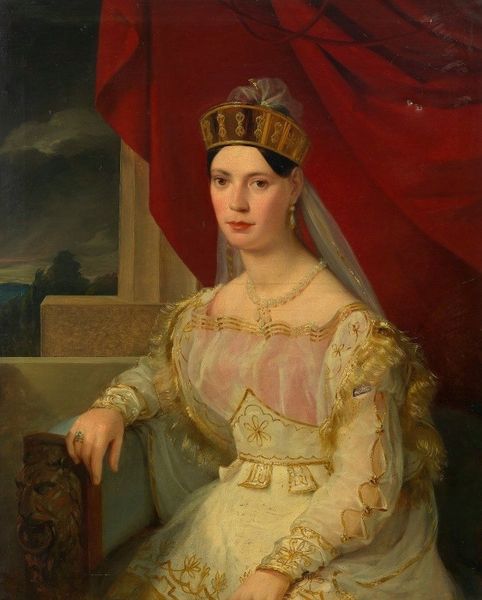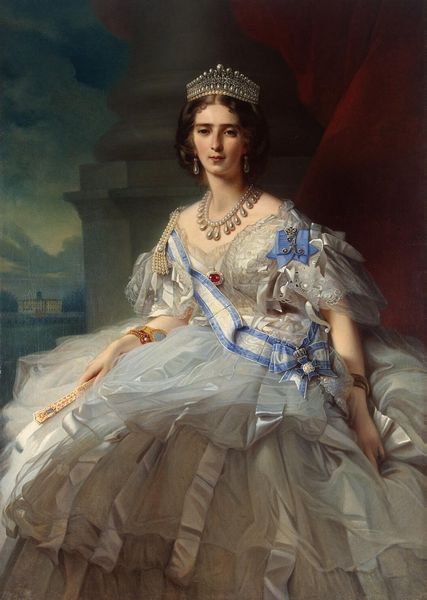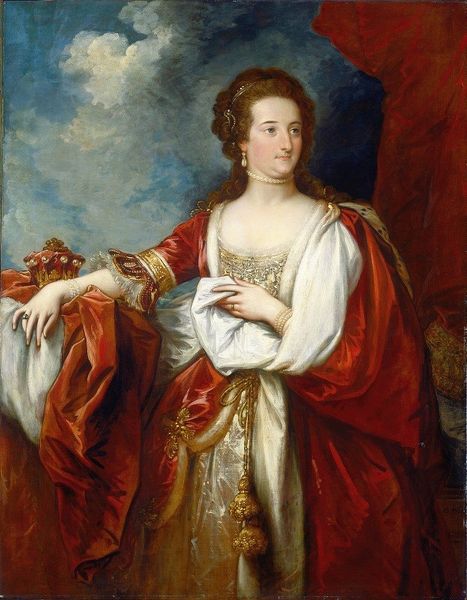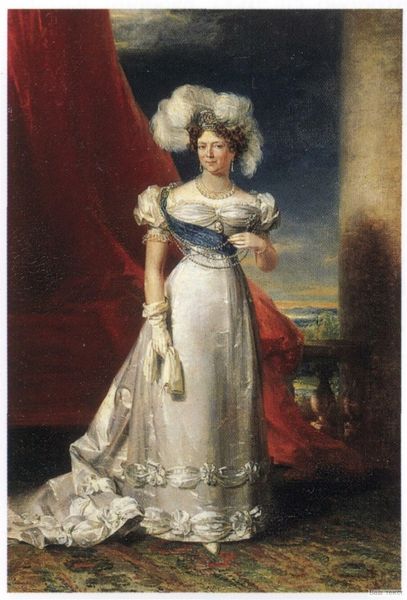
Dimensions: 157.5 x 241.9 cm
Copyright: Public domain
Editor: Here we have Franz Xaver Winterhalter's "Queen Victoria," painted in 1859. The medium is oil paint. Initially, the richness of color and the sheer opulence strike me. It's a display of power, definitely, but there's also something quite…reserved about it, don't you think? What's your take? Curator: "Reserved opulence" - I adore that description! It resonates beautifully. Think of Victoria as the grandmother of Europe; in this 1859 portrait, painted well into her reign, we aren't seeing simply royalty. What emotions simmer beneath her controlled presentation? What sort of world do you feel she has inherited? This is Romanticism's heart beating strong here, and Winterhalter paints with such sensitivity to her internal emotional landscape while needing to signal political prowess. Editor: I see what you mean about the emotions underneath. It makes me think about how public figures navigate these carefully crafted images. What does that almost wistful look in her eyes suggest about that emotional landscape you mentioned? Curator: Perhaps the burden of duty, a quiet acknowledgment of life's complexities. After all, by this point, she'd already weathered considerable storms. She holds the future, so to speak, within the palm of her hand. Think of Winterhalter using that single point of focus in his piece... what possibilities open up for the viewer? What may she create... or, perhaps, choose to destroy? Editor: It’s fascinating to think about all that power resting in one person, conveyed through a painting. Now, looking at it, it feels less about pomp and circumstance, and more like a study of character under immense pressure. Thanks for shifting my perspective! Curator: And thank you. Winterhalter manages to transform history into intimate connection. We both were changed, if only for a moment. Perhaps our listeners will, too!
Comments
No comments
Be the first to comment and join the conversation on the ultimate creative platform.

